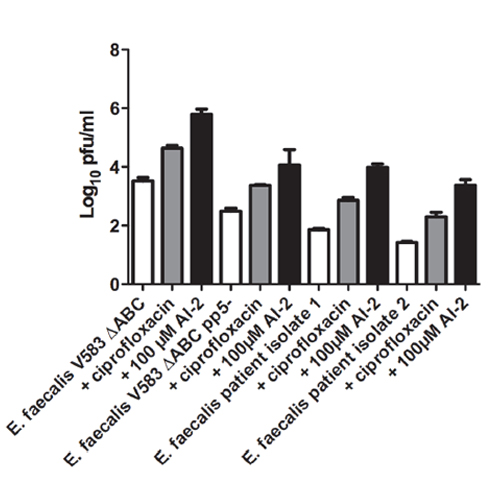Phage-mediated Dispersal of Biofilm and Distribution of Bacterial Virulence Genes Is Induced by Quorum Sensing
23-Feb-2015
PLOS Pathogens, 2015, DOI: 10.1371/journal.ppat.1004653, published on 23.02.2015
PLOS Pathogens, online article
PLOS Pathogens, online article
The microbiome and the phage meta-genome within the human gut are influenced by antibiotic treatments. Identifying a novel mechanism, here we demonstrate that bacteria use the universal communication molecule AI-2 to induce virulence genes and transfer them via phage release. High concentrations (i.e. 100 μM) of AI-2 promote dispersal of bacteria from already established biofilms, and is associated with release of phages capable of infecting other bacteria. Enterococcus faecalis V583ΔABC harbours 7 prophages in its genome, and a mutant deficient in one of these prophages (i.e. prophage 5) showed a greatly reduced dispersal of biofilm. Infection of a probiotic E. faecalis strain without lytic prophages with prophage 5 resulted in increased biofilm formation and also in biofilm dispersal upon induction with AI-2. Infection of the probiotic E. faecalis strain with phage-containing supernatants released through AI-2 from E. faecalis V583ΔABC resulted in a strong increase in pathogenicity of this strain. The polylysogenic probiotic strain was also more virulent in a mouse sepsis model and a rat endocarditis model. Both AI-2 and ciprofloxacin lead to phage release, indicating that conditions in the gastrointestinal tract of hospitalized patients treated with antibiotics might lead to distribution of virulence genes to apathogenic enterococci and possibly also to other commensals or even to beneficial probiotic strains.











